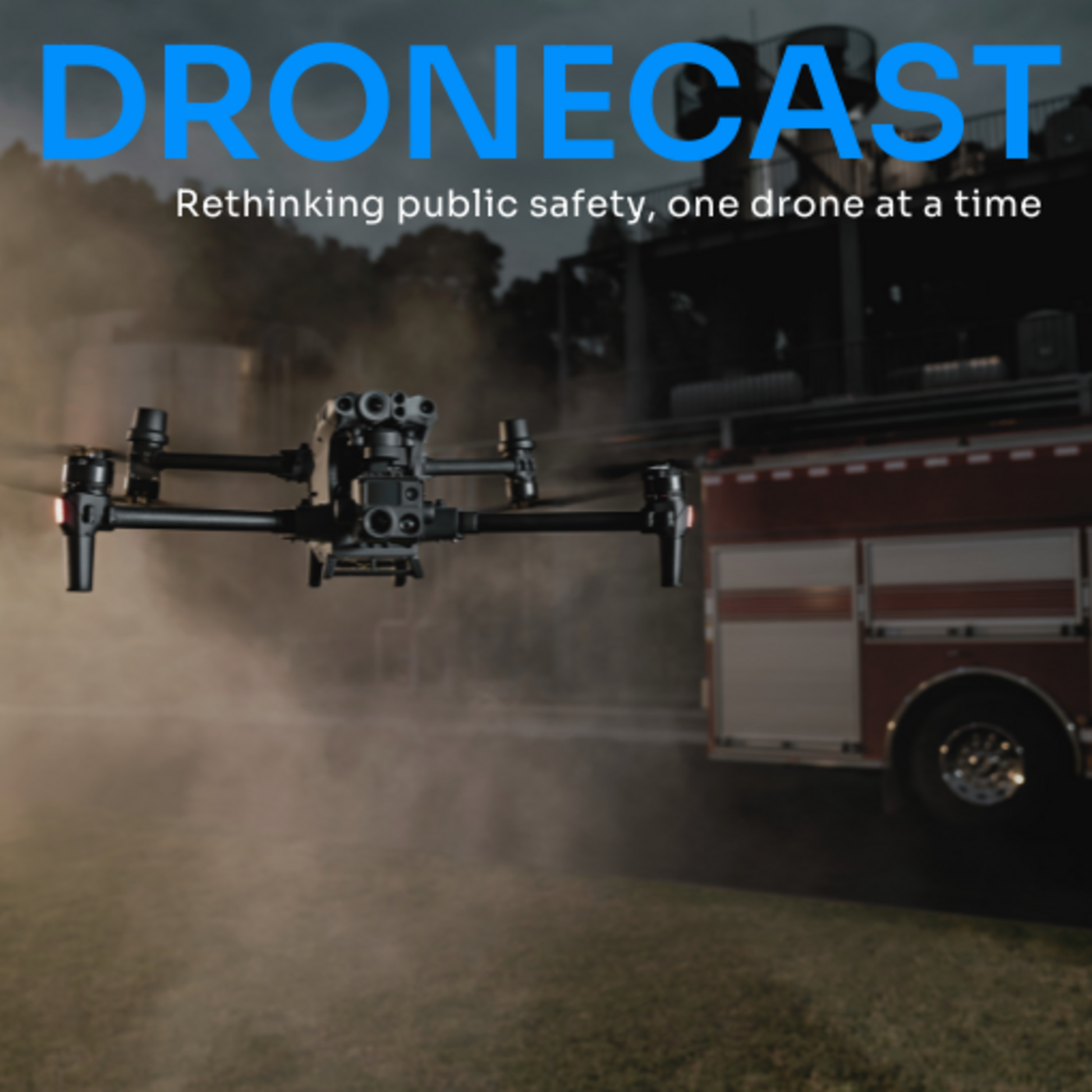Same Direction, Different Flight Paths: One Year of Global Lessons from Public Safety UAS
May 6, 2025

Join hosts John McLeod and Joe Kearns as they reflect on a milestone year for DroneCast, highlighting the evolution of the podcast and the public safety drone landscape. From its humble beginnings to reaching tens of thousands of listeners, this special mini-episode revisits key conversations that have shaped the way agencies approach drone operations. One year of stories, shared struggles, and breakthrough insights from agencies worldwide shaping the future of drone-powered public safety. John and Joe discuss how drone programs have grown from isolated initiatives to integrated, community-wide solutions—fueled by cross-agency collaboration, evolving technology, and a shared commitment to innovation. Whether you're a drone operator, program manager, or policymaker, this episode offers valuable takeaways on the past, present, and future of drones in public safety.
In this special year-in-review episode of DroneCast, hosts John McLeod and Joe Kearns take a moment to look back on an incredible year of growth—for both the podcast and the public safety drone community. What started as a niche platform for industry professionals has grown into a widely respected resource for tens of thousands of listeners across the country. Reflecting on the conversations, challenges, and breakthroughs that defined the past year, John and Joe explore how drone programs have evolved from siloed operations to essential, collaborative tools in emergency response.
One year of stories, shared struggles, and breakthrough insights from agencies worldwide shaping the future of drone-powered public safety.
The discussion touches on the increasing importance of inter-agency coordination, the shift in public perception of drones, and how programs are navigating complex regulatory landscapes to deliver faster, smarter, and safer results. They highlight key trends such as shared airspace management, real-time data sharing, and the role of public-private partnerships in scaling drone operations.
From comparing how the U.S. and U.K. are deploying drones to understanding how cities are integrating drones across departments, the episode underscores a growing movement: one where drones are no longer experimental, but mission-critical. With insights from a year’s worth of expert interviews, field-tested case studies, and policy discussions, this episode offers a thoughtful recap and a forward-looking perspective for anyone involved in the future of public safety drone programs.
Helpful Links:
- Fill out the Audience Form here.
- Explore more episodes and insights on the official DroneCast website: dronesense.com/dronecast
- Ready to launch or enhance your drone program? Get Started with DroneSense today!
Episode Highlights:
- [05:24] Building a Public Safety Drone Program - Beyond the Basics
Starting a public safety drone program requires understanding it's not a simple plug-and-play solution, but rather a complex tapestry of training, policy, compliance, and technology components. Agencies need to develop comprehensive frameworks that address everything from operational procedures to data management and regulatory requirements. The key challenge is making these sophisticated programs more accessible and turnkey for departments looking to implement drone technology. Success requires partnering with established programs and technology providers to create standardized approaches that maintain effectiveness while reducing complexity. Looking at successful implementations across the US shows that life-saving drone capabilities are most effectively deployed when programs build on proven frameworks rather than starting from scratch - [10:03] Cross-Agency Collaboration Model for Drone Programs
The evolution of drone programs has moved from individual department initiatives to collaborative, city-wide operations that maximize resources and impact. Modern drone programs succeed by breaking down silos between police, fire, EMS, and other municipal departments to create shared infrastructure and expertise. Cross-department collaboration allows agencies to pool budgets, expand pilot resources, and create more sustainable programs. The model extends to sharing drone capabilities with public utilities, GIS departments, and even commercial partners during disaster response. This collaborative approach creates more resilient programs while expanding the positive impact of drone technology across communities. - [13:29] Building Community Through Shared Knowledge
The drone industry's rapid evolution makes it critical for agencies to learn from each other rather than reinventing solutions independently. Successful programs actively participate in knowledge sharing networks, learning from others' experiences in training, policy development, and technology implementation. The community approach helps agencies avoid common pitfalls while accelerating their program development through proven best practices. Creating these information sharing networks has become a cornerstone of program success, allowing agencies to build on collective experience. This collaborative mindset extends to technology platforms, with interoperability becoming increasingly important for program efficiency and effectiveness.
Dronecast: Rethinking Public Safety, One Drone at a Time Podcast is handcrafted by our friends over at: fame.so
Previous Guests include: Matt Rowland, Jason Burnside
Check out our 3 most downloaded episodes:
Previous Guests include: Matt Rowland, Jason Burnside
Check out our 3 most downloaded episodes: